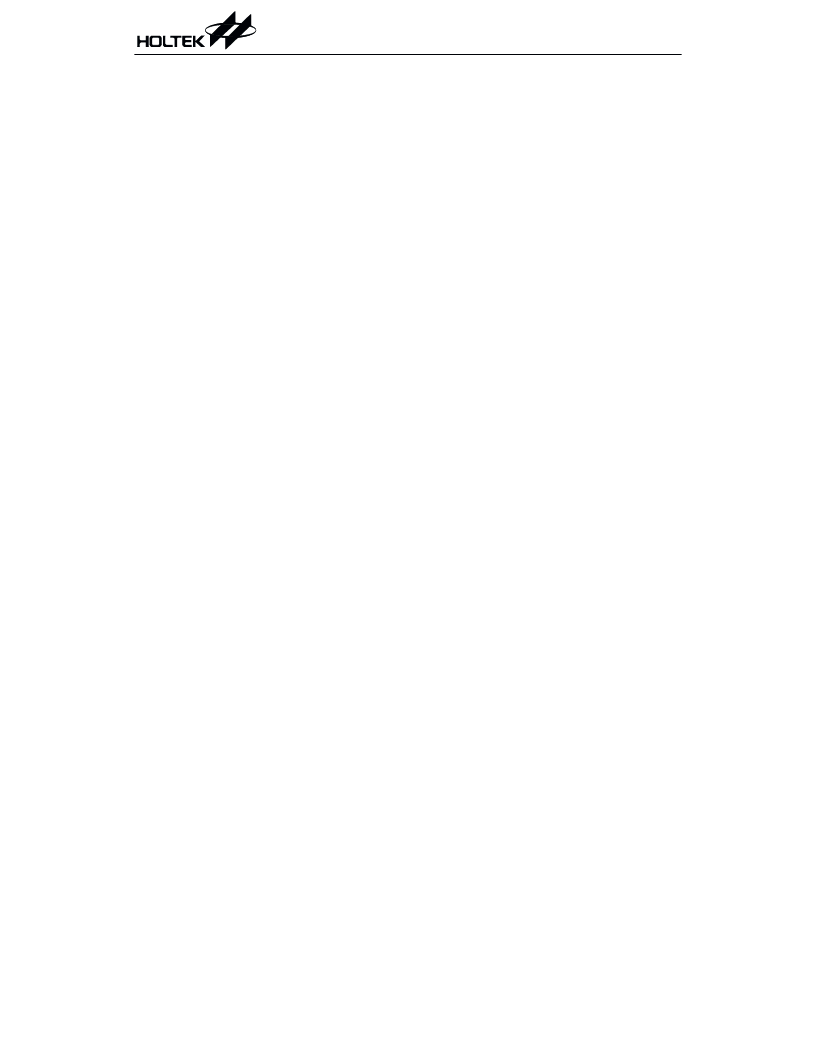- 您現(xiàn)在的位置:買賣IC網(wǎng) > PDF目錄385399 > HT48C50- (Holtek Semiconductor Inc.) 8-BIT MICROCONTROLLER PDF資料下載
參數(shù)資料
| 型號(hào): | HT48C50- |
| 廠商: | Holtek Semiconductor Inc. |
| 元件分類: | 數(shù)學(xué)處理器 |
| 英文描述: | 8-BIT MICROCONTROLLER |
| 中文描述: | 8位微控制器 |
| 文件頁(yè)數(shù): | 19/45頁(yè) |
| 文件大小: | 295K |
| 代理商: | HT48C50- |
第1頁(yè)第2頁(yè)第3頁(yè)第4頁(yè)第5頁(yè)第6頁(yè)第7頁(yè)第8頁(yè)第9頁(yè)第10頁(yè)第11頁(yè)第12頁(yè)第13頁(yè)第14頁(yè)第15頁(yè)第16頁(yè)第17頁(yè)第18頁(yè)當(dāng)前第19頁(yè)第20頁(yè)第21頁(yè)第22頁(yè)第23頁(yè)第24頁(yè)第25頁(yè)第26頁(yè)第27頁(yè)第28頁(yè)第29頁(yè)第30頁(yè)第31頁(yè)第32頁(yè)第33頁(yè)第34頁(yè)第35頁(yè)第36頁(yè)第37頁(yè)第38頁(yè)第39頁(yè)第40頁(yè)第41頁(yè)第42頁(yè)第43頁(yè)第44頁(yè)第45頁(yè)

HT48C50-1
19
June 14, 2000
Preliminary
or to generate an accurate time base and PFD
signals.
Using the internal clock sources, there are 2
reference time-bases for timer/event counter 1.
The internal clock source can be selected as
coming from f
SYS
/4 (can always be optioned) or
f
RTC
(enable only the system oscillator in the
Int. RC+RTC mode) by mask option. The exter-
nalclockinputallowstheusertocountexternal
events, measure time intervals or pulse widths
or to generate an accurate time base.
There are 2 registers related to the timer/event
counter 0; TMR0 ([0DH]), TMR0C ([0EH]). Two
physical registers are mapped to TMR0 location;
writingTMR0makesthestartingvaluebeplaced
in the timer/event counter 0 preload register and
readingTMR0getsthecontentsofthetimer/event
counter 0. The TMR0C is a timer/event counter
controlregister,whichdefinessomeoptions.
There are 3 registers related to timer/event
counter 1; TMR1H (0FH), TMR1L (10H),
TMR1C (11H). Writing TMR1L will only put
the written data to an internal lower-order byte
buffer (8 bits) and writing TMR1H will transfer
the specified data and the contents of the
lower-order byte buffer to TMR1H and TMR1L
preload registers, respectively. The timer/event
counter 1 preload register is changed by each
writing TMR1H operations. Reading TMR1H
will latch the contents of TMR1H and TMR1L
counters to the destination and the lower-order
byte buffer, respectively. Reading the TMR1L
will read the contents of the lower-order byte
buffer. The TMR1C is the timer/event counter 1
control register, which defines the operating
mode, counting enable or disable and active
edge.
The TM0, TM1 bits define the operating mode.
The event count mode is used to count external
events, which means the clock source comes
from an external (TMR0/TMR1) pin. The timer
mode functions as a normal timer with the
clock source coming from the f
INT
clock/instruc-
tion clock or RTC clock (Timer0/Timer1). The
pulse width measurement mode can be used to
countthehighorlowleveldurationoftheexternal
signal (TMR0/TMR1). The counting is based on
the f
INT
clock/instruction clock or RTC clock
(Timer0/Timer1).
In the event count or timer mode, once the
timer/event counter 0/1 starts counting, it will
count from the current contents in the
timer/event counter 0/1 to FFH or FFFFH. Once
overflow occurs, the counter is reloaded from the
timer/event counter 0/1 preload register and gen-
erates the interrupt request flag (T0F/T1F; bit
5/6 of INTC) at the same time.
In the pulse width measurement mode with
the TON and TE bits equal to one, once the
TMR0/TMR1 has received a transient from low
to high (or high to low if the TE bits is "0") it will
startcountinguntiltheTMR0/TMR1returnsto
the original level and resets the TON. The mea-
sured result will remain in the timer/event
counter 0/1 even if the activated transient oc-
curs again. In other words, only one cycle mea-
surement can be done. Until setting the TON,
the cycle measurement will function again as
long as it receives further transient pulse. Note
that, in this operating mode, the timer/event
counter 0/1 starts counting not according to the
logic level but according to the transient edges.
In the case of counter overflows, the counter 0/1
is reloaded from the timer/event counter 0/1
preload register and issues the interrupt re-
quest just like the other two modes. To enable
the counting operation, the timer ON bit (TON;
bit 4 of TMR0C/TMR1C) should be set to 1. In
the pulse width measurement mode, the TON
will be cleared automatically after the mea-
surement cycle is completed. But in the other
two modes the TON can only be reset by in-
structions. The overflow of the timer/event
counter 0/1 is one of the wake-up sources. No
matter what the operation mode is, writing a 0
to ET0I/ET1I can disable the corresponding in-
terrupt services.
In the case of timer/event counter 0/1 OFF con-
dition, writing data to the timer/event counter
0/1 preload registerwillalsoreloadthatdatato
the timer/event counter 0/1. But if the
timer/event counter 0/1 is turned on, data writ-
ten to it will only be kept in the timer/event
counter 0/1 preload register. The timer/event
counter 0/1 will still operate until overflow oc-
curs (a timer/event counter 0/1 reloading will oc-
相關(guān)PDF資料 |
PDF描述 |
|---|---|
| HT48C70-1 | I/O Type 8-Bit MCU |
| HT48R70A-1 | I/O Type 8-Bit MCU |
| HT48C70 | 8-Bit Microcontroller Series |
| HT48CA0-2 | Remote Type 8-Bit MCU |
| HT48RA0 | Remote Type 8-Bit MCU |
相關(guān)代理商/技術(shù)參數(shù) |
參數(shù)描述 |
|---|---|
| HT48C50(28SKDIP-H) | 制造商:未知廠家 制造商全稱:未知廠家 功能描述:8-Bit Microcontroller |
| HT48C50(40DIP-A) | 制造商:未知廠家 制造商全稱:未知廠家 功能描述:8-Bit Microcontroller |
| HT48C50-1 | 制造商:未知廠家 制造商全稱:未知廠家 功能描述:8-Bit I/O Type Mask MCU |
| HT48C50-1_09 | 制造商:HOLTEK 制造商全稱:Holtek Semiconductor Inc 功能描述:I/O Type 8-Bit MCU |
| HT48C70 | 制造商:HOLTEK 制造商全稱:Holtek Semiconductor Inc 功能描述:8-Bit Microcontroller Series |
發(fā)布緊急采購(gòu),3分鐘左右您將得到回復(fù)。